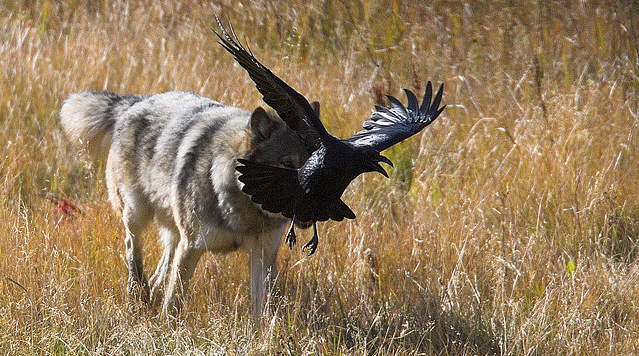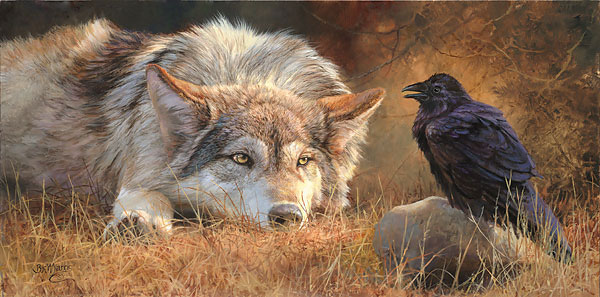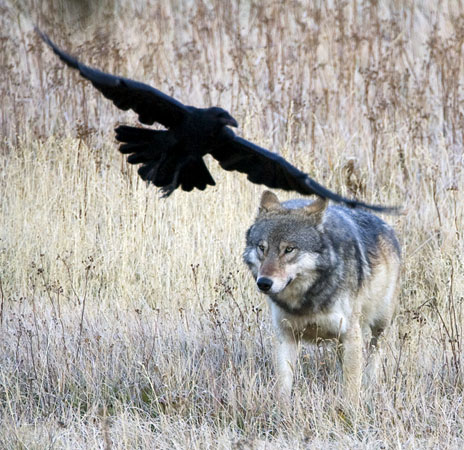
The raven is occasionally referred to as “the wolf-bird.” Like many other species, ravens scavenge at wolf kills, but their behaviour is more complex.
Both wolves and ravens are capable of forming social bonds, and they appear to have developed over many years to do so in a way that is advantageous to both species.
There are a few explanations for why wolves and ravens frequent the same dead animals. One is that owing to their ability to fly, ravens are superior to wolves at finding carcasses. But they can’t get to the meal once they get there, because they can’t open up the carcass. As a result, they will create a lot of noise, and then wolves will appear and use their powerful jaws and keen teeth to gain access to the food so that both they and the ravens may eat it.
Additionally, circling sick elk or moose and yelling out have been seen by observers, presumably warning wolves of a potential easy meal. The other hypothesis contends that ravens react to wolves howling in anticipation of a hunt (and, for that matter, to human hunters shooting guns). They discover the wolves’ route and follow it. Both hypotheses might be accurate.
Ravens and wolves both enjoy playing. A wolf will play back when a raven sneaks up behind it and yanks its tail. There may be a concert of howls and calls when ravens respond to wolf howls with their own calls.
Bernd Heinrich’s Mind of the Raven and Lawrence Kilham’s The American Crow and the Common Raven are two credible sources.





Leave a Reply